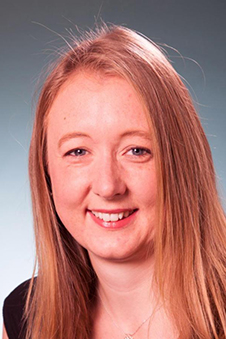New research from the University of Otago, Christchurch, has found reduced cost public transport can play an important role in affordability and accessibility, specifically for those on lower incomes who face transport difficulty.
The study, which surveyed public housing respondents in Ōtautahi Christchurch, found almost half reported they were able to afford additional trips as a result of a half-price government public transport initiative, with over one-third able to spend money on food and other essentials as a result.

Dr Angela Curl.
Lead author, Dr Angela Curl, a senior lecturer in the campus’s Department of Population Health, says the study found those experiencing transport poverty benefited in terms of widening access and reduced financial stress.
“We know that public housing residents, including those in our study, experience transport difficulties related to affordability and accessibility, with Statistics New Zealand figures showing the lowest income households spend more than a quarter of their incomes on transport,” Dr Curl says.
“Our findings show that for many who live in public housing, access to reduced fares on public transport reduces their financial stress, gives them the ability to get to places they need, removes anxiety, and improves their well-being and social contact.”
The study, published in the Australian journal Transport Findings, analysed data from a 2022 transport survey, investigating participants’ perspectives and experiences of half price public transport fares in Ōtautahi Christchurch during a Transport New Zealand Waka Kotahi “transport relief package” to support New Zealanders through the global energy crisis.
The half price fare initiative, which ran from April 2022 to June 2023, reduced an adult single fare zone in Christchurch to NZ$1.30 with a MetroCard, or NZ$2.10 cash.
The study surveyed 372 public housing tenants and older people in Christchurch between October and November 2022. In-depth qualitative interviews were then conducted with 25 public housing residents from the cohort, including questions about awareness, use and impact of half price bus fares.
Forty-five per cent of public housing respondents stated that half price fares had allowed them to make a trip they would otherwise have been unable to take, compared to 16 per cent of other respondents.
Thirty-six per cent said they’d been able to spend money on other things such as food due to the fare reductions, compared to 8 per cent of other respondents, while a quarter said they would not have taken their most recent trip if paying a full price fare.
Dr Curl says most interview participants said they’d made use of half price fares while they were available.
“As well as the obvious financial benefits, respondents told us that half price fares allowed them to travel greater distances, explore more of the city and spend more time out and about without having to try and get home within a two-hour-free transfer period or during concessionary fare time periods.
“Mental health benefits were reported too, with participants stating they able to see friends and family more often, with one saying they were able to make new friends on the bus, while another said he’d been able to take up a voluntary role he’d previously been unable to afford to get to,” Dr Curl says.
For some, travelling by bus also removed anxieties about driving, being stuck in traffic, or unable to find parking.
For respondents who said they did not make use of half price fares, some cited a lack of appropriate mental health support on buses, while others expressed concern that they’d start to rely on them, only for fares to increase again once the initiative ended.
Publication details
Title: Accessibility and Affordability Impacts of Half Price Public Transport Fares in Aotearoa New Zealand
Authors: Angela Curl, Anna Coppens, Cushla Dares, Jonathan Williman, Helen Fitt, Simon Kingham
Transport Findings